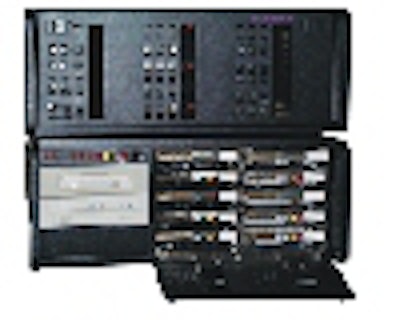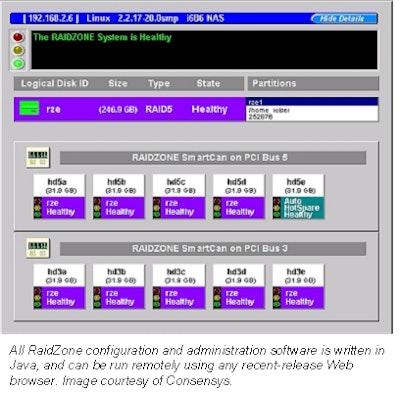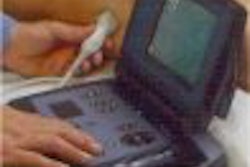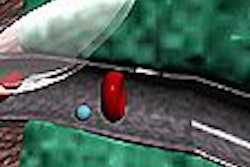
SALT LAKE CITY - For PACS users, long-term storage media choices have typically been confined to options such as CD-ROM, magneto-optical disc (MOD), and digital linear tape (DLT). Unfortunately, these approaches often fail to provide sufficiently rapid retrieval times for deployment in network-attached storage (NAS) applications, an increasingly popular form of digital image archiving.
While redundant arrays of independent disks (RAID) can do the job nicely for many NAS situations, it can be a costly architecture to implement when a facility needs to maintain a cache of images approaching the terabyte (TB) level. RaidZone, a first-time exhibitor at this week's Symposium for Computer Applications in Radiology, believes it has broken the price/performance barrier to RAID, however.
RAID is a storage method in which data, along with information used for error correction (such as parity bits or Hamming codes), is distributed among two or more hard disk drives in order to improve performance and reliability. RaidZone, a Universal City, TX, division of Markham, Ontario-based application-developer Consensys, has created a proprietary peripheral component interconnect (PCI) local bus technology that the company claims can read stored data at the rate of 100 MB per second. Traditional RAID configurations are based on the small computer system interface (SCSI) standard that transfers data at 20 MB per second via an 8-bit controller.
The transfer rate of the PCI bus interface is limited only by the PCI controller’s exchange rate with the system CPU, set at either 32 or 64 bits, according to RaidZone. In addition, the use of this architecture permits the company to hang up to 45 drives off three controller cards.
 |
By utilizing the PCI bus, RaidZone is able to build its storage units, called "cans" by the company, around fast, inexpensive advanced technology attachment (ATA) drives. These drives are usually found as hard drives in most desktop platforms. In addition, ATA drives are generally priced at about 20% to 25% of the cost of SCSI hard drives.
This enables the company to offer 1-TB RAID packages at a street price of $20,000, according to Vas Rajevski, director of sales for RaidZone.
"We’re experimenting with different configurations now that may bring that price point even lower," Rajevski said.
The RaidZone product line is available in versions based on either the Microsoft Windows 2000 or Linux operating systems. The administrator software for the units, however, is written in platform-independent Java. This permits remote administration of the storage units on any OS via a Web-browser interface, according to the company.
Despite being a new player in the medical storage sector, RaidZone has had some initial success. Its products are in use at the Dana Cancer Institute at Harvard University in Boston and at the Baylor Medical Center in Dallas, Rajevski said.
By Jonathan S. Batchelor
AuntMinnie.com staff writer
May 3, 2001
Related Reading
DLT, MOD have different strengths in PACS storage; more choices on the way, September 19, 2000
Click here to post your comments about this story in our PACS Digital Community. Please include the headline of the article in your message.
Copyright © 2001 AuntMinnie.com



















